Introduction
Poison hemlock (Conium maculatum) was first introduced to North America from Europe as an ornamental. This poisonous plant has since established in almost every state in the United States. Western water hemlock (Cicuta douglasii) is a wetland plant that is native to the intermountain region. It may be confused with poison hemlock, but causes a different type of poisoning and is considered one of the most poisonous plants in North America.
Identification
Poison hemlock, of the Apiaceae (parsley) family, is a biennial that usually grows 6 to 8 feet tall. Its extensively branched stems are smooth, erect, and solid, with distinct ridges. Distinctive purple spots are visible on the lower portions of the stems (Fig. 1). The fleshy white taproot is long and has a smell close to that of carrots or parsnips.
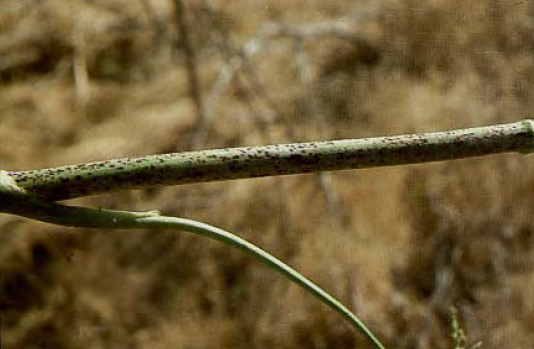
Figure 1. Poison hemlock stems have purple spots.
parsnips. Shiny, green leaves are triangular shaped, arranged alternately on the stem, and divided 3 or 4 times (Fig. 2). Each leaf has several pairs of leaflets that grow from opposite sides of the stalk. The numerous leaflets are 1/8 to 1/4 inch long and segmented, with veins that run to the tips of the lobes. The lower leaves are on long stalks and clasp the stem, while the upper leaves are on short stalks. The foliage has a strong, musty odor.
The white flowers bloom from June to August. They are stalkless with five petals, and develop in numerous umbrella-shaped clusters, each supported by a stalk. The inconspicuous bracts beneath the flowers are ¼ inch long with a green center and whitish edges. The fruits are small, grayish-brown with prominent, wavy, longitudinal ribs. Two light brown, 1/8 inch long seeds are enclosed in each fruit. They are paired, ribbed, and concave.
Poison hemlock can be distinguished from wild carrot by its hairless leaves and stems. Poison hemlock is also commonly mistaken for cow parsnip, which differs in that it has palmately (fan-shaped) compound leaves rather than pinnately compound like poison hemlock.
Western water hemlock, also of the parsley family, is a highly poisonous perennial often confused with poison hemlock. Its stems are erect, 3 to 7 feet tall, and usually enlarged at the base. The alternate, pinnate leaves have a toothed margin (Fig. 2). A distinguishing characteristic is the leaf veins that terminate at the bottom of leaf serrations, and not at the tips.
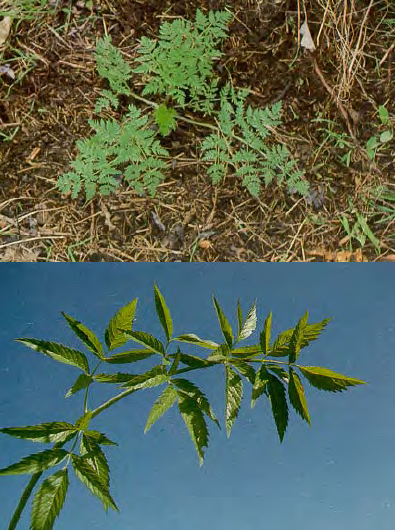
Figure 2. Poison hemlock leaves appear fern-like (top). Western water hemlock leaves have veins that terminate in the bottom of serrations (bottom).
Like poison hemlock, western water hemlock’s flowers are white and grouped in umbrella-shaped clusters (Fig. 3). Likewise, each flower is two-seeded. The tea-colored seeds are somewhat kidney-shaped with corky ridges.
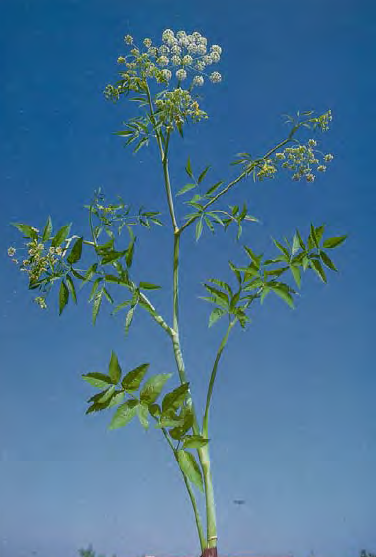
Figure 3. Western water hemlock has umbrella-shaped clusters of white flowers.
The most recognizable feature of western water hemlock is its thick, tuberous rootstalk that contains many small chambers (Fig. 4). These chambers hold a highly poisonous brown or straw-colored liquid that is released when the stem is broken or cut. Thick, fleshy tubers and slender individual roots grow from the bottom of the main rootstalk.
Western water hemlock is often confused for the edible water parsnip. The easiest way to distinguish between these species is by western water hemlocks distinct root system. In addition, the leaves of water parsnip end at the leaf tips, and its flowers have bracts.
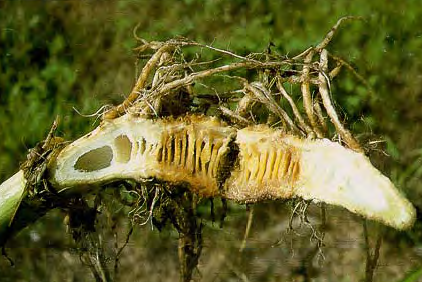
Figure 4. The roots of western water hemlock are the most poisonous part of the plant.
Habitat
Poison hemlock is commonly found at lower elevations along roadsides, ditch and stream banks, creek beds, fence-lines, waste places, and in or on the edge of cultivated fields where there is sufficient soil moisture. It can also invade native plant communities in riparian woodlands and flood plains where natural aquatic systems dominate. It can survive in dry sites with poorly drained soils, but is most competitive under wetter soil conditions.
Western water hemlock is a wetland plant especially common on pastures or tilled areas. It can also be found along streams and irrigation canals. Its establishment on rangeland is limited due to its high water requirement. This plant occurs in wet, fertile soils at the edge of waters. It is most common in deep loam, clay loam, or clay soils.
Impact
Poison hemlock can invade perennial crops and grain fields, but it more commonly invades grazing areas such as pastures and meadows. It crowds out more desirable forage species, and its toxicity causes considerable livestock losses.
Mistaking poison hemlock for another member of the carrot family, such as parsley, can have deadly consequences. This plant is toxic to humans, but livestock poisonings are much more common. All classes of livestock and wildlife are susceptible to poisoning, with cattle, goats, and horses being the most sensitive. Animals tend to avoid this plant when other forage is available, but they will consume it when not much other vegetation is present, or when greenchop, silage, or hay is contaminated with it.
All parts of poison hemlock are poisonous, but the lower sections of the stem and root are the most deadly. Symptoms of poisoning include: nervousness, trembling, knuckling at the fetlock joints, ataxia, dilation of the pupils, a weak and slow heartbeat, coma, and ultimately death from respiratory paralysis. Fetal deformation may occur if a pregnant animal eats poison hemlock. The plant’s toxins may pass into an animal’s milk and affect the offspring. It can also have an effect on the safety of milk that humans drink from dairy cattle.
Western water hemlock is deemed the most violently toxic plant in North America. Only a small amount of the toxic substance is needed to cause poisoning in livestock and humans. The toxic substance in the plant is cicutoxin, an unsaturated alcohol that has a strong carrot-like odor. The roots are the most toxic part. The leaves and stems are poisonous in the early stages of growth, but lose much of their toxicity when mature. The green seed heads are also highly poisonous. Sheep that consume it do not seem to be as affected as cattle.
Signs of poisoning can occur 15 minutes to 6 hours after the plant is consumed. Symptoms include: muscle twitch, rapid pulse, rapid breathing, tremors, convulsions, excessive salivation or frothing at the mouth, and dilation of the pupils. Animals will eat western water hemlock in the spring and graze on the green seed heads later in the season.
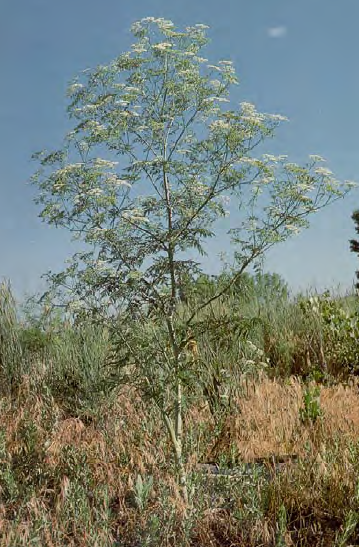
Figure 5. Poison hemlock grows 6 to 8 feet tall.
Weed Management Options
Prevention
It is important to prevent small infestations of these hemlocks from becoming larger. Inspect the land for newly invading plants. Identify the plant and then remove it by hand pulling, hoeing, or applying a spot herbicide treatment. Wear gloves and protective clothing when handling these plants. To avoid spread of the seed, minimize soil disturbance by abstaining from driving machinery and vehicles through infested areas, and limiting livestock use in the area. Preventing small infestations of the plants from producing seed is vital. Control and avoidance of western water hemlock are the only ways to prevent livestock loss from poisoning.
Mechanical Control
Plowing or repeated cultivation will prevent poison hemlock from establishing. If cultivation is not possible, mow the plants after they have bolted. Unfortunately, a single mowing will not provide complete control. Repeated mowing will reduce its competitive ability, deplete carbohydrate energy reserves in the taproot, and prevent seed production. Mowing close to the ground will also reduce the amount of leaf material available for livestock grazing. Burning is not considered a useful method for poison hemlock control, as this plant grows in wet sites and remains green all season long.
Hand grubbing is a very effective method of removing western water hemlock. The roots must be entirely removed because they are attractive to grazing livestock and highly poisonous. This plant is easily removed when the ground is moist. Gather all the plant pieces after removal and burn them.
Cultural Control
Western water hemlock grows where water is abundant, which is usually areas that receive heavy grazing pressure. Animals are attracted to it because it emerges early in the spring, its green, and it has an attractive smell. Western water hemlock is pulled out of the ground very easily in areas where the ground is moist and soft, thus animals are likely to eat the entire plant. This increases the chances of livestock poisoning. Grazing should be postponed until the ground is dry and the plant is harder to remove. Controlling the access of animals to habitats where western water hemlock grows may reduce the risk of poisoning.
Biological Control
It is unknown how the European Palearctic moth (Agonopterix alstroemeriana) was initially introduced into the United States, but it has rapidly moved throughout and colonized the western states, including Nevada, demonstrating success in poison hemlock control. The larvae live in conspicuous leaf rolls, and feed on foliage, buds, and flowers in the spring and early summer.
There are currently no commercial biological control methods available for western water hemlock.
Chemical Control
The herbicide tebuthiuron provides pre-emergence control of poison hemlock plants, as does chlorsulfuron and a combination of chlorsulfuron and metsulfuron. The pre-emergence photosynthetic inhibitors hexazinone, metribuzin, and terbacil also provide great control of poison hemlock.
Post-emergence application of phenoxy herbicides or glyphosate can be effective, with best results when applied in early spring. Treating poison hemlock with herbicides may entail repeated applications for a couple of years.
For western water hemlock, application of chemicals is most effective when done in late spring or early summer. Glyphosate, 2,4-D, and picloram will all provide excellent control of western water hemlock. Apply 2,4-D or MCPA to western water hemlock at a rate of 2 lb ae/A in the early bolting stage of growth. Chemical application is an effective means of control, but there is some evidence that the toxicity of the plant increases after spraying until the plant dies. Most animal losses take place in the spring or after the plants were sprayed with chemicals. Therefore, keep animals away from treated plants for 3 weeks after spraying. Repeat herbicide application until eradication is accomplished.
References
- Sheley, R.L., and J.K. Petroff, eds., Biology and Management of Noxious Rangeland Weeds. Corvallis, OR: Oregon State University Press, 1999. Pp. 290-297.
- Whitson, T.D., ed., L.C. Burrill, S.A. Dewey, D.W. Cudney, B.E. Nelson, R.D. Lee, and R. Parker. Weeds of the West. Jackson, Wyoming: Pioneer of Jackson Hole, 1992. Pp. 20-23.
- Pokorny, Monica L., and Roger L. Sheley. Montguide: Poison Hemlock. 6 Feb 2004.
- William, R.D., A.G. Dailey, D. Ball, J. Colquhoun, T.L. Miller, R. Parker, J.P. Yenish, T.W. Miller, D.W. Morishita, P.J.S. Hutchinson, and M. Thompson. Pacific Northwest Weed Management Handbook. Corvallis: Oregon State University, 2003.
- Block, Neil. Cicuta douglasii. Rangeland Ecosystems and Plants. 24 June 2003. USASK.
- Water Hemlock. Utah State University. 24 June 2003.
- Photographs are courtesy of Weeds of the West.
Graham, J. and Johnson, W.
2004,
Managing Poison and Western Water Hemlocks,
Extension | University of Nevada, Reno, FS-04-09


